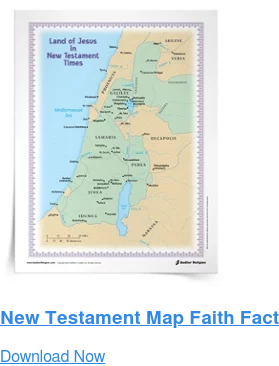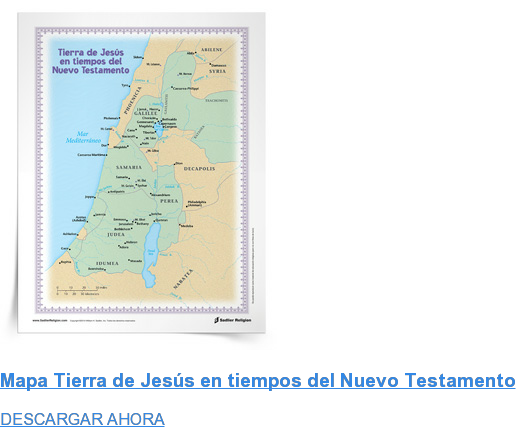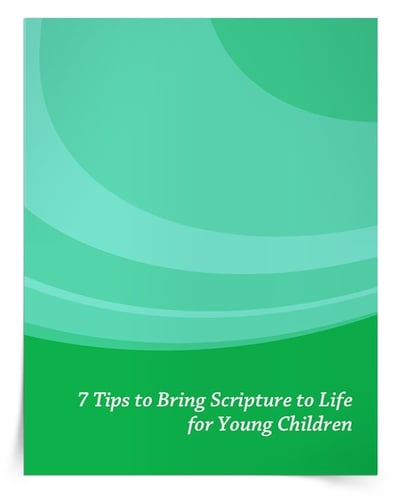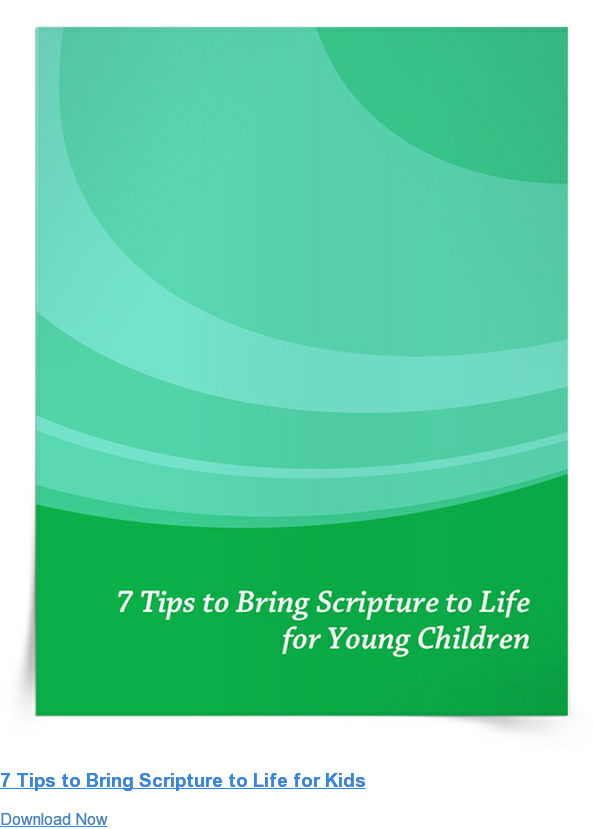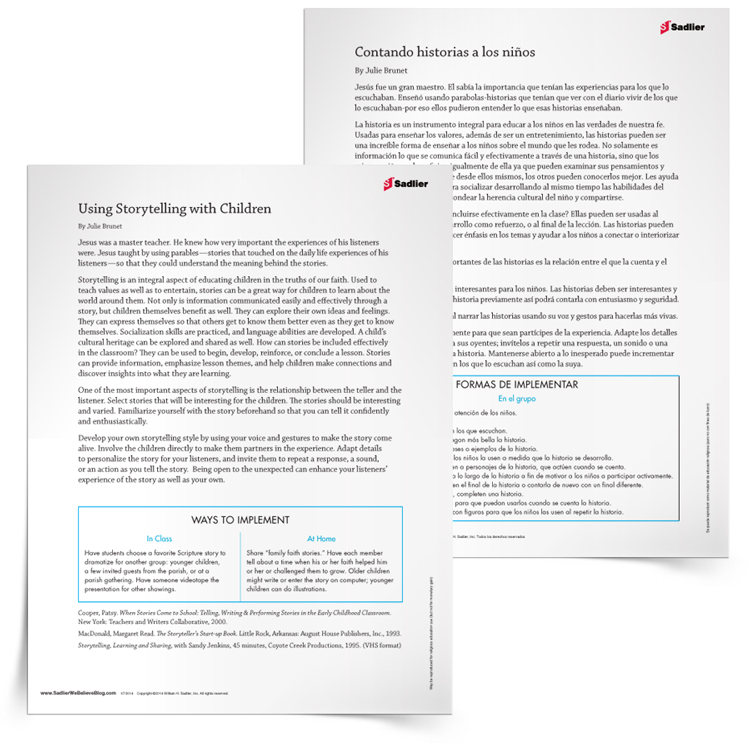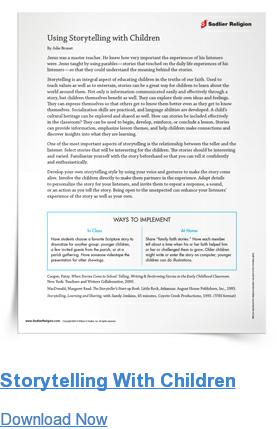May 9, 2018 WBB Scripture, WBB For Families, REL Asset - Activity, REL Catechetical - K–6, REL Catechetical - Jr High, REL Asset - eBook, REL Asset - Support Article, REL PD - Family Faith, REL Topic - Scripture
Regular Catholic Scripture study presents families with a wonderful opportunities to learn, share, pray and talk about our faith. If you are looking to encourage the children and families in your religious education program to explore and share Scripture together, review this roundup of resources to inform and inspire!

Bible Basics for Catholic Children and Families
Also referred to as Sacred Scripture or Scripture, the Bible is God’s Word, written by human authors under the inspiration of the Holy Spirit.
The Bible has two parts: the Old Testament, which tells the story of God’s relationship with the people of Israel, and the New Testament, which is the story of Jesus Christ, the Son of God, and his followers. The Bible is comprised of 73 books, which are divided into chapters, which are divided into verses.
For ten helpful tips on reading the Bible, visit this list published by the United States Conferences of Catholic Bishops. You can also purchase a copy of the NABRE here or explore a teen Bible here.
Teaching Catholic Children Bible Search Skills
Reading Scripture is an integral part of any religious education program. Before teaching children and families strategies that will enhance their Catholic scripture study, make sure children know how to navigate the bible. Its also important that parents know how to reinforce these search skills at home!
Asses the search skills of children in your religious education program with the following steps:
STEP 1: Ask children to locate a book within the bible. Students should be able to use their Bible’s table of contents to figure out the name of the book if it’s abbreviated.
STEP 2: Next, tell children to find the start/beginning page of the book assigned to them. This information will also be found in the table of contents.
STEP 3: Instruct children to go to the page number found in the table of contents. Point out that they are now at the beginning of the book assigned to them.
STEP 4: Ask students to turn to a specific chapter in the book.
STEP 5: Once students have turned to the chapter, instruct them to locate a specific verse.
STEP 6: Read the verse.
Once children know the basics of navigating the Bible, they’ll be able to utilize these skills to search digital versions of the Bible, which can sometimes be found online.
When you share Scripture stories together as a class or as a family, you can reinforce Bible searching and referencing skills by reminding students of the book and chapter of the story you’re sharing.
Catholic Scripture Study Resources and Activities
#1 NEW TESTAMENT MAP
As children study the life and teachings of Jesus, there is a natural opportunity to explore the geographic region in the time in which Jesus lived and taught, and today. Download a Land of Jesus in New Testament Times Faith Fact that families can use during Catholic Scripture study.
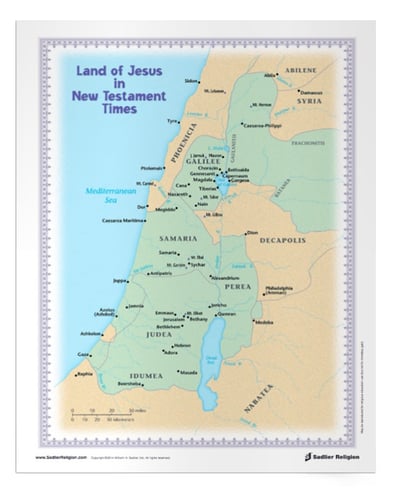
#2 TEN COMMANDMENTS TOOLKIT
The Ten Commandments are the Laws of God’s covenant given to Moses on Mount Sinai. These Laws were followed by the Israelites and are God’s Laws for us, today, as well. The Ten Commandments show us as Catholics how to live a life of love.
Families can use the resources in the Teaching the Ten Commandments Toolkit as they study the stories of Moses and the Israelites in the Old Testament.
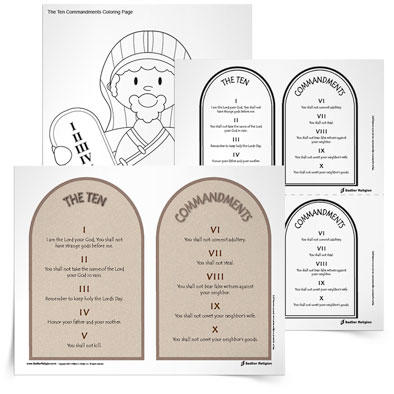
#3 THIS WEEK'S LITURGY
At every Mass, children and families have the opportunity to hear readings from Scripture. Encourage parents to extend the weekly readings during their family Scripture study! The This Week’s Liturgy digital feature based on the weekly Gospel reading offers prompts and activities for children, families, and adults and is available for each week of the year.
#4 MERCY SCRIPTURE QUEST ACTIVITY
The Mercy Scripture Quest Activity will challenge children ages 11–15 to find, read, and cite passages from their Bibles related to the virtue of mercy. Mercy is the caring for the needs of people's minds, hearts, and lives. It means to share in God's forgiveness and love.
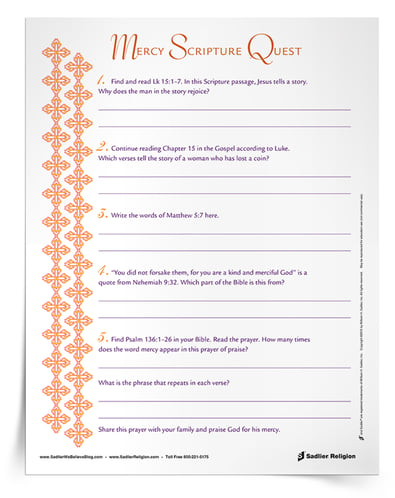
#5 MARY SCRIPTURE QUEST ACTIVITY
The Mary Scripture Quest Activity will challenge children ages 11–15 to find, read, and cite passages from their Bibles related to Mary, Mother of God. Mary was the first to hear about the mission of Jesus, and therefore Jesus’ first disciple. Mary’s faith came from an understanding of the great gifts that God had given to her, especially the gift of her Son, Jesus. She dedicated her life on earth to following him and showing others how to follow him. Mary is the greatest saint, and our greatest example of discipleship.
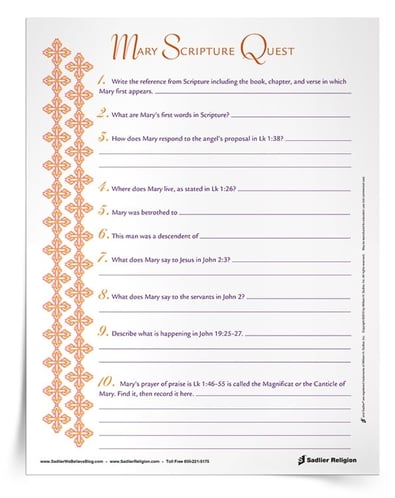
Use Storytelling to Enliven Catholic Scripture Study
Jesus was a master teacher. He knew how very important the experiences of his listeners were. One way that Jesus taught was by using parables—stories that touched on the daily life experiences of his listeners. These parables helped Jesus’ listeners understand the meaning behind the stories. Through recorded over several centuries, these stories resonate with today’s reader and can touch on the daily life experience of the children and families in your religious education program.
To help young children come to know and love the stories of our faith, including Jesus’ parables, catechists and parents can implement some simple strategies to enliven Catholic Scripture study.
The 7 Tips to Bring Scripture to Life for Young Children eBook includes storytelling techniques that can enhance children’s understanding of Scripture stories and reading of the Bible.
Teach Parents the Importance of Storytelling
Storytelling is a powerful tool in educating children in the truths of the faith. Like the parables Jesus taught, good stories can help children connect to their own experience and the world around them. Stories inspire and entertain while they inform. They encourage empathy and exploration of important feelings and concepts, and develop social and emotional skills as well as language.
How can stories be included effectively in Catholic scripture study? They can be used to begin, develop, reinforce, or conclude a lesson. Stories can provide information, emphasize lesson themes, and help children make connections and discover insights into what they are learning.
Share the Using Storytelling with Children Support Article with parents in your religious education program and encourage them to explore storytelling at home.



